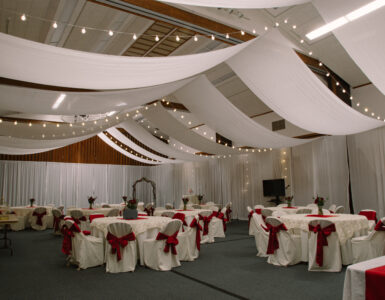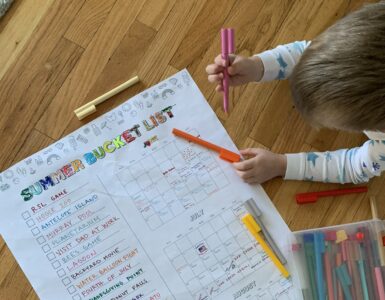For people who love being in motion on wheels OR who want to try a new
outdoor adventure, Freeline Skating may be for you!
Outdoor enthusiast Sheryl McGlochlin shows us how to take up the new sport
of freeline skating.
What is Freeline Skating?
Freeline Skates are 2 independent platforms, one for each foot. There are no
straps. You just stand on them.
There are 2 wheels for each platform.
2 kinds of Freeline Skates to choose from:
1) Wood
2) Aircraft-grade cast aluminum
Cost:
Freeline Grom: $79
For those just getting into the sport, the Grom is designed for quick learning,
cruising and riding free. Its compact design is super light-weight, low to the
ground and easy to turn. With its optional training wheel set-up, the Grom is
the perfect entry-level ride. Wood platform
Freeline OG: $150
This is our Original model for hard-core rippers that want their skates to last
a lifetime of thrashing, shredding, and grinding. The OG’s reinforced swing-
arms are able to hold up to 3,000 lbs of downward force and its single-piece
construction is made of 356-T6, aircraft-grade cast aluminum for maximum
durability.
Who should ride Freeline Skates: Anyone with a spirit of adventure! All ages
and abilities should trym Freeline Skating! They even come with training
wheels!!
People who already know how to roller blade, snowboard, wakeboard,
skateboard, longboard, etc. are more likely to pick this sport up faster than
those who don’t.
Benefits:
Keeps you active and off the couch watching TV or playing video games!
Helps improve your balance
Helps improve motor skills
Attention getter – people will watch you since Freeline Skating is still fairly
new on the market
A very compact way to get around
Your “transportation” fits a backpack or purse when not in use!
Great workout that doesn’t feel like exercise
Super fun to do
VERY economical mode of transportation
Where to buy:
I sell Freeline Skates on my website at www.liveandthrive.com
OR go to: www.freelineskates.com
What you need to get started:
Find a good location with a smooth surface
Find something or someone to hold on to i.e. a friend, wall, fence, parked
car, chair, railing, etc.
A helmet
A pair of freeline skates
A determined attitude (some people will pick it up fast and others need a lot
more practice before they get it)
Tip for those who want to try this but may be afraid of falling at first:
To just get a feel for what it’s like to stand on the Freeline Skates, find a
location that has an indoor/outdoor carpet OR some type of very low carpet
that is not as smooth and fast as pavement would be.
Practice just standing on the skates while holding on to something
Don’t plan on moving much if you are standing on carpet.
3 steps for learning how to Freeline Skate:
· NOTE: Beginners are not meant to balance on Freeline Skates while not
in motion so push yourself along…
· Before trying this yourself, try to watch someone do it, whether in person
OR on a video. Several videos have been provided below.
· One of the keys to unlocking your ability to be a great skater is to
visualize the motion and try to see yourself skating.
· Be careful, wear safety gear and follow each step listed below. Most
important, stay with it and practice
1) HOLD ON to something i.e. a friend, wall, fence, parked car, chair, railing,
etc.
There is a left and a right skate.
Your feet go almost perpendicular to the direction of the wheels.
Put your back foot on first with your toe down, so the skate doesn’t roll away,
then put your front foot, centered on the front skate. Remember, the wheels
only go sideways, so make sure to line the wheels going sideways before
standing on them.
Stand on skates properly and take a minute to get comfortable.
When you are ready push along the wall, etc. to get going.
Get used to the motion of your feet being independent.
Initially, it may be challenging to steer both feet independently.
If you need to jump or step off, you are only a few inches from the ground so
don’t panic.
Go back to the wall and try again.
2) PUSH OFF, turn and rotate your feet to steer
Turn the heels of your feet OUT (toes closer together, heels farther apart).
Next, turn the heels of your feet IN (heels closer together, toes farther apart).
Repeat over and over again until you get the hang of it.
Heels in, toes out, then toes in, heels out.
Keep rotating heels and toes in and out until you get the feeling as you
move.
Practice while pushing along a fence, wall, or whatever you are holding on to
for balance.
Keep your weight evenly on BOTH FEET, rather than what you are holding on
to.
Steer with your front foot, follow with your back foot.
Keep your legs somewhat close together.
When your back foot creeps behind you, just turn your back skate out and it
will steer back toward the front.
3) SWING YOUR ARMS
Turn your feet out (toes out) and swing your front arm towards your heel
side.
Then, turn your feet in (toes in) and swing your front arm towards your toe
side.
Continue this process as you develop a rhythm.
Keep your feet about shoulder width apart.
Avoid doing the splits.
When riding downhill, keep your weight forward by bending your front leg
and hold your back skate steady on the outside of each turn (similar to riding
a snowboard).
MORE TIPS
Remember to lean in the direction that you are going.
If you feel like you are going to fall, step off forward, put your foot down on
the ground, then go back to the wall and try again.
Always practice safe skating by wearing a helmet and watching out for others
around you.
Website: www.freelineskates.com
Videos:
www.youtube.com/watch?
v=A0SrbQCLktA&feature=related
www.youtube.com/user/freelinethenextride?
feature=results_main
www.youtube.com/watch?v=DoDuKVQVBC0
Sheryl McGlochlin has been teaching classes and leading outdoor adventures
since February 2003. She has hiked the Swiss Alps and many hikes in
beautiful Maui. She organizes and promotes over 350 Outdoor Events and
Classes each year in sports i.e. hiking, snowshoeing, camping, Utah
Adventure Vacations, stand up paddle surfing, flat water kayaking, land
paddling, hooping, trampoline jumping, bike riding, Zipfy riding, skiing,
Dutch Oven Cooking and Emergency preparedness skills.
You can contact her through: www.liveandthrive.com
http://
www.meetup.com/LiveAndThriveOutdoorAdventures/















Add comment